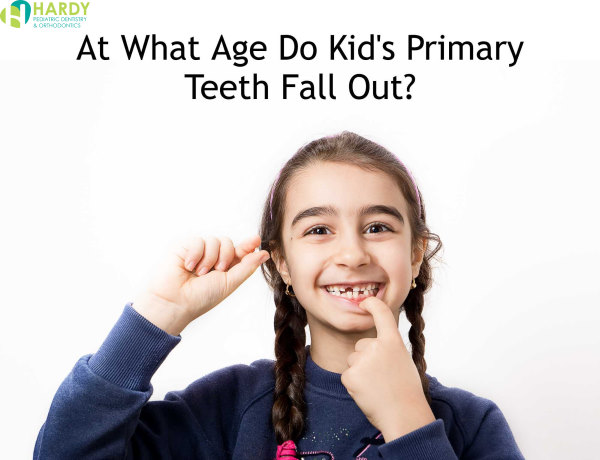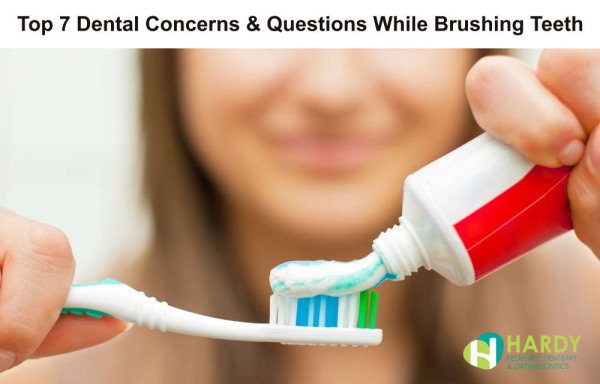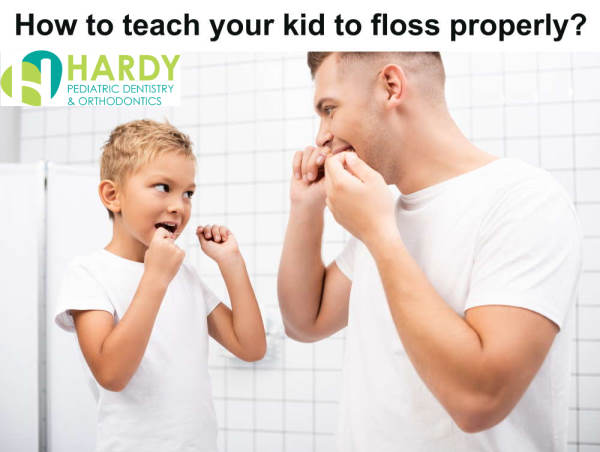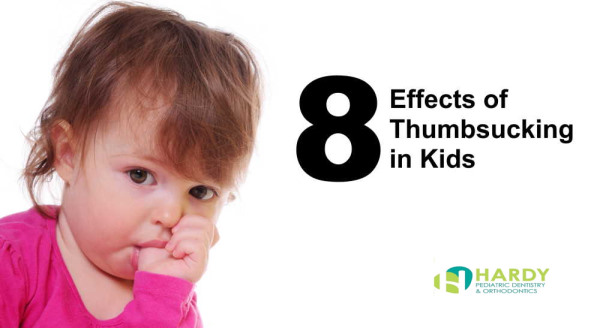When Does Baby Teeth Fall Out?

Teach Your Kids The Basics of Flossing
September 14, 2021
Learn How to Clean Invisalign Aligners
September 30, 2021Baby Teeth: Average age for first lost tooth
The average age at which children lose their teeth differs considerably. At six years of age, a kid’s deciduous teeth (baby teeth) start to fall off in anticipation of the growth of adult teeth. Nevertheless, each child is unique and different, and some kids may lose their initial baby tooth as early as 4 years old, while others may not lose it till they’re 7 years old. Children often continue to lose their baby teeth until they reach 12. Primary teeth or milk teeth gradually fall out to make space for adult teeth to erupt. In most cases, there will be 32 permanent teeth to develop.
Commonly, the 2 upper central incisors and 2 lower central incisors fall out first. The lateral incisors, first molars, canines, and second molars will soon follow. Oftentimes, baby teeth fall out in the sequence in which they erupted. This is the normal order in which baby teeth are lost (shed), but it still differs per kid. Every child loses teeth in a distinct way and at a certain developmental period.
Read Tips to Make Flossing Easier for Children
Deciduous teeth or primary teeth frequently linger in their teeth sockets until adult teeth drive them out as they erupt. Generally, this is a straightforward, natural procedure. If a kid prematurely loses a primary tooth due to an accident or decay, the gap created by the lost tooth may be filled by an adult tooth. This may lead to permanent teeth being crowded, resulting in their uneven development. Please do not hesitate to call your child’s pediatric dentist if you have any worries or questions.
Sequence of Baby Tooth Loss
While the infant is still in the mother’s womb, baby teeth grow. About five weeks of pregnancy, the baby’s jaws produce the first buds of baby teeth. A baby’s twenty deciduous teeth have nearly finished their crowns at birth and are buried beneath the jawbones of the baby. At approximately 6 months of age, the very first baby teeth start to show. Frequently, the 2 bottom central incisors (bottom front teeth) come in initially. Following that, the 4 upper front teeth appear. More teeth then emerge gradually, often in pairs – one on each side of the upper jaw or lower jaw – until all 20 primary teeth (10 each in the upper and lower jaws) have emerged by the time the kid is two to three years old. The child’s jaws keep developing as they prepare for the eruption of adult teeth starting at the age of 6. Between 6 and 7 years old, primary teeth start to come out. This phase is repeated until the youngster reaches approximately 12 years old. Although the period of teeth eruption is distinct for each kid, the pattern in which teeth come in is more uniform. When your child reaches 21 years old, all 32 adult teeth should have sprouted.
Learn 7 doubts regarding brushing teeth
Should a loose tooth be wiggled?
The appropriate course of action is to let a loose tooth come out normally. It can be wiggled but it should never be hastily pulled on due to the danger of bacteria developing in the site, infection as well as bleeding. If your child’s primary tooth is loose, they can wiggle it carefully. Even when the action is minimal, everyday teeth wiggling teaches your youngster to evaluate the extent of looseness and prevents unnecessary or unpleasant surprises.
When you wiggle, the backward and forward movement is insufficient to dislodge the baby tooth from the gums. Spinning the loose primary tooth clockwise and then counter-clockwise is also an effective technique for speeding up the tooth’s removal. When the deciduous tooth has become fully loose and is on the verge of coming out, the following advice will assist you:
- For a few minutes, hold an ice cube along the gums before wriggling the loose baby tooth out. This will assist numb the gums of your child, making the procedure more painless.
- A wet tooth is extremely slippery that’s why you should dry the tooth using a clean napkin or tissue since it is far more manageable to grab if it’s dry.
- Whilst rotating the tooth in one way, hold it for at least five to ten seconds. Then, in the other way, twist and hold it. By holding the tooth in the twisting orientation, the gum fibers are loosened, permitting the tooth to be removed from the gums more easily.
Inform your kid that a certain feeling of tingling or bleeding may happen during tooth extraction (this, however, may differ from child to child), but that everything will be fine and the discomfort or blood will cease fast. Urge your child to clean his or her mouth using tepid saltwater after removing the tooth. This will reduce any discomfort and assist in the stoppage of the bleeding. Apply a wet cloth to the newly formed hole between their teeth until the bleeding stops entirely. If bleeding or pain continues, an oral analgesic (an OTC anesthetic) may be given. Contact your pediatric dentist if the bleeding or pain does not stop after 1 hour. There is no reason to be alarmed if your child accidentally swallows a baby tooth. Milk teeth are relatively tiny and re-emerge frequently.
Keep in mind that while your child’s tooth is loose, he or she should keep brushing, flossing, and eating regularly. If they complain of pain, Ibuprofen is a good medication to give them before sleeping. Although it is normally recommended to consult with a dentist regarding your child’s dental care, the reality is that you do not need to see a dentist unless your kid experiences a serious dental issue. Proceed to see your child’s pediatric dentist for routine examinations and oral hygiene appointments to manage their development and oral health. Nonetheless, you should bring your kid to a dentist if they exhibit any one of the symptoms listed:
- Pain that is more intense than typical while the teeth are emerging.
- Teeth already become loose before they’re 5 years old.
- It becomes tougher to eat and brush teeth.
- Extra dental plaque forms around the tooth, causing inflamed or swollen gums.
- The deciduous tooth was initially loose but has suddenly recovered its firmness.
- Although the permanent tooth has emerged, the primary tooth has not loosened.
Delayed tooth loss – Should I be concerned?
Ordinarily, there’s a huge variation in the age at which children naturally and properly lose their baby teeth. Between the ages of eight and 10, most parents worry about their kids’ late tooth loss. Although nothing seems to be problematic in these cases, it is advisable to consult an orthodontist. Your child’s situation will next be determined by an X-ray taken by the orthodontist. Parents should not be alarmed about tooth loss occurring later than expected unless the following situations arise:
- Crowding occurs when there is insufficient space for adult teeth to erupt. They may not be able to extract the primary teeth directly above.
- Adult teeth (permanent teeth) are not apparent from birth. A deciduous tooth does not typically fall out until the permanent tooth underneath it drags it upward to replace it. When a youngster is lacking some adult teeth, this development is hindered in specific areas of the mouth.
- When additional teeth emerge, they can impede the natural growth of permanent teeth. Your orthodontist can identify if your kid has a critical dental problem or is simply growing slowly.
When toddlers lose teeth – What is normal?
The most frequently asked question by parents to their dentist is if their kid’s deciduous teeth are erupting too fast or too slow. Children lose their baby teeth at varying ages, and the considered healthy age of losing teeth is subjective. Primary teeth rarely come out early. Ordinarily, a child loses their initial baby tooth at the age of six and completes the cycle at the age of twelve. While this timeframe is open to change, there is cause for alarm if your child loses their initial primary tooth even before age of three or 4. They are generally lost prematurely as a consequence of being knocked out or developing tooth decay. If your kid loses a tooth before reaching the age of 6, you should contact a pediatric dentist to verify if there are any underlying issues.
When baby teeth are lost early, nearby teeth may shift out of alignment. This is because deciduous teeth act as guidelines for adult teeth, assisting them in erupting appropriately. This can have a severe influence on not just the permanent tooth’s eruption, but also on the growth of adjacent teeth, leading to serious alignment issues. Undergoing orthodontic therapy may be essential depending on your kid’s age as well as the location of the premature lost tooth or teeth.
Sources:
- ADA tooth eruption timeline
- Verma N, Bansal A, Tyagi P, Jain A, Tiwari U, Gupta R. Eruption Chronology in Children: A Cross-sectional Study. Int J Clin Pediatr Dent. 2017;10(3):278-282. doi:10.5005/jp-journals-10005-1450



